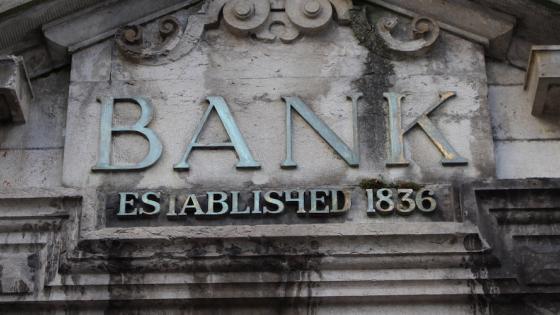The rapid growth of FinTech companies has received a great deal of attention. Despite this attention, the drivers and consequences of FinTech’s disruptive forces on financial markets remain open to debate. Recent VoxEU columns tackle some of these issues. For example, Navaretti et al. (2018) illustrate the competitive effect of FinTech in the financial intermediation industry, while Cornelli et al. (2020) investigate the economic drivers of FinTech credit growth in a cross-country study.
Another important question related to FinTech’s role for financial markets is the impact that FinTech has on small and medium-sized enterprises (SMEs). In the aftermath of the global financial crisis, a series of capital and other regulations enacted to make banks more resilient may have had the unintended consequence of widening the SME credit gap (e.g. Acharya et al. 2018, Cortés et al. 2020). Yet, SMEs constitute a segment of the corporate landscape that is heavily dependent on bank financing, since corporate bond markets are typically precluded to them. In this respect, the ‘promise’ of FinTech may materialise in its ability to narrow the SME credit gap.
With respect to the question outlined above, the literature does not offer a conclusive answer. It is still unclear whether FinTech platforms reach borrowers underserved by more traditional financial intermediaries, or whether FinTech platforms and banks compete for the same segment of firms. These two very different scenarios also yield distinct predictions for FinTech’s impact on firms’ investment and financing choices. In our recent paper (Eça et al. 2021), we aim to shed light on these issues by zooming in at the firm level, studying the determinants of firms’ – and more specifically, SMEs’ – choice to switch to FinTech platforms as well as the implications of FinTech lending availability for firms’ investment and financing policies.
We are in a unique position to study the role of new FinTech lending models for SMEs thanks to our access to a dataset from a leading independent FinTech platform in Portugal that directly links retail investors to SME borrowers. We combine these data with administrative databases that report financial statements for the universe of non-financial firms, financial statements for banks, and matched bank-firm loans from the Central Credit Register. A crucial aspect of our data is the availability of information about both the firms who manage to borrow through the FinTech platform and the firms who apply but get rejected by the platform, including financial data and the characteristics of the banks serving these firms. This feature allows us to study the determinants of the demand for FinTech lending, and also to investigate the firm-level consequences of obtaining a FinTech loan holding fixed such a demand.
Defining the FinTech clientele
We start by studying the FinTech platform clientele and exploring the characteristics of FinTech applicants versus the non-applicant firms in our sample. We find that FinTech platforms cater to larger SMEs, with higher profitability, and low credit risk. Importantly, we find that firms who apply for FinTech funding are significantly more likely to already have bank debt in their debt structure and, at the same time, do not exhibit higher levels of overdue debt. When we compare accepted versus rejected applications (i.e. the sample is restricted to firms that apply to FinTech lending), we find that the FinTech platform's choice is markedly tilted toward larger, more profitable firms, with more leverage and less overdue debt.
This first set of results contrasts with the traditional financial intermediation literature (Sharpe 1990), which suggests that competition should lead newcomers to allocate capital toward lower quality and younger firms. In addition, our results deviate from the existing empirical findings on peer-to-peer (P2P) platforms, which indicate that FinTech serves a riskier unexplored market segment in consumer loans (de Roure et al. 2016, Hau et al. 2019, Di Maggio and Yao 2020) and mortgage origination (Buchak et al. 2018, Fuster et al. 2018).
A second set of results allow us to shed further light on the reason why firms decide to apply to the FinTech platform. We study the characteristics of the banks that have a lending relationship with the SMEs in our sample. We find that SMEs are more likely to apply for FinTech lending if they have relationships with banks with less stable sources of funding, lower liquidity of assets, and lower capital ratios. This indicates that one of the reasons why firms switch to FinTech is to reduce their exposure to banks that are less able to absorb shocks and more likely to cut lending activity during liquidity crises (Khwaja and Mian 2008, Ivashina and Scharfstein 2010). These results highlight the importance of banks' quality and their resilience to shocks in the decision to access FinTech lending platforms.
How do firms use FinTech loans?
To explore the effects of obtaining FinTech lending on firm investment and financing policies, we restrict our analysis to the set of firms who apply to the FinTech platform. By comparing accepted applicants to firms who applied but get rejected by the platform we can effectively hold fixed the demand for FinTech credit, focusing on the real effects of its supply.
We find that firms increase assets, employment, and sales following FinTech lending. Firms that access FinTech lending experience an 8.2 percentage point increase in asset growth, a 5.1 percentage point increase in employment growth, and a 5.8 percentage point increase in sales growth relative to the control group of rejected applicants. We also find an increase in investment of 1.5 percentage points of assets relative to firms with rejected applications. In addition, we do not observe any significant impact of FinTech loans on profitability, which indicates that FinTech loans contribute to firm growth without sacrificing profitability.
We observe an important impact of FinTech lending also on firms’ debt structure. Firms that access the FinTech platform increase their leverage by 4.9 percentage points relative to rejected firms. This increase is reflected in both long-term and short-term leverage. In addition, net of FinTech loans, we find that firms decrease long-term bank debt, and increase short-term bank debt. We find a 6.4 percentage point decrease in long-term bank leverage and a 2.1 percentage point increase in short-term bank leverage relative to the control group of rejected applicants. Thus, our findings suggest that access to FinTech lending allows firms to expand their debt capacity and substitute long-term bank lending with long-term FinTech lending.
Since FinTech loans are unsecured, these results also point to another important determinant of firms' choice to apply to FinTech platforms. There are several reasons why SMEs may prefer to finance their growth with long-term debt. For example, they may want to avoid the refinancing risk inherent in short-term debt (see Diamond 1991, Diamond 1993, Brunnermeier and Yogo 2009). However, most SMEs are limited in their availability of collateral, and tighter regulation and higher capital requirements make long-term unsecured loans to SMEs unattractive to banks (Cortés et al. 2020, Chernenko et al. 2019). FinTech provides firms with an alternative to access unsecured long-term financing.
We also observe that access to the FinTech platform allows SMEs to further diversify their pool of lenders. FinTech loans allow firms to add new bank relationships and reduce their dependence on a single bank, as indicated by a drop in the share of firm debt accounted by its main bank. While obtaining a FinTech loan seems to increase the firm's cost of debt, we find a reduction in the cost of bank debt (i.e. cost of debt excluding FinTech loans). This suggests that the diversification of lenders that firms achieve after obtaining a FinTech loan leads to a reduction in the cost of bank debt.
Policy implications
Overall, our results indicate that FinTech lending platforms are beneficial to SMEs, but for reasons that are not necessarily the ones expected ex ante. FinTech platforms do not seem to serve young, untested firms with no prior access to the banking system. Thus, the benefits of FinTech do not seem to lie in increased financial inclusion of small businesses. FinTech, however, does allow high-quality SMEs to finance their growth and, at the same time, diversify their lending relationships. Our results suggest that the SMEs who apply to FinTech platforms want to reduce their exposure to shocks to the banking system, which may curtail their available financing and, ultimately, adversely affect their growth. The fact that SMEs are interested in securing long-term FinTech debt also aligns well with the notion that firms in our sample want to protect themselves against credit supply shocks.
References
Acharya, V V, A N Berger and R A Roman (2018), “Lending implications of US bank stress tests: Costs or benefits?”, Journal of Financial Intermediation 34: 58-90.
Balyuk, T, A N Berger and J Hackney (2020), “What is fueling FinTech lending? The role of banking market structure”, Working Paper.
Brunnermeier, M K and M Yogo (2009), “A note on liquidity risk management”, American Economic Review 99: 578-83.
Buchak, G, G Matvos, T Piskorski and A Seru (2018), “FinTech, regulatory arbitrage, and the rise of shadow banks”, Journal of Financial Economics 130: 453-483.
Chernenko, S, I Erel and R Prilmeier (2019), “Why do firms borrow directly from nonbanks?”, Working Paper.
Cornelli, G, J Frost, L Gambacorta, R Rau, R Wardrop and T Ziegler (2020), “FinTech and big tech credit: a new database”, BIS Working Paper 887.
Cortés, K R, Y Demyanyk, L Li, E Loutskina and P E Strahan (2020), “Stress tests and small business lending”, Journal of Financial Economics 136: 260-279.
de Roure, C, L Pelizzon and P Tasca (2016), “How does P2P lending fit into the consumer credit market?”, Bundesbank Discussion Paper No. 30/2016.
Diamond, D W (1991), “Debt maturity structure and liquidity risk”, Quarterly Journal of Economics 106: 709-737.
Diamond, D W (1993), “Seniority and maturity of debt contracts”, Journal of Financial Economics 33: 341-368.
Di Maggio, M and V Yao (2021), “FinTech borrowers: Lax screening or cream-skimming?”, Review of Financial Studies 34: 4565–4618.
Eça, A, M A Ferreira, M Porras Prado and A E Rizzo (2021), “The Real Effects of FinTech Lending on SMEs: Evidence from Loan Applications”, CEPR Discussion Paper 16684.
Fuster, A, M Plosser, P Schnabl and J Vickery (2019), “The role of technology in mortgage lending”, Review of Financial Studies 32: 1854–1899.
Gopal, M and P Schnabl (2020), “The rise of finance companies and FinTech lenders in small business lending”, Working Paper, NYU Stern School of Business.
Hau, H, Y Huang, H Shan and Z Sheng (2019), “How FinTech enters China's credit market”, AEA Papers and Proceedings 109: 60-64.
Ivashina, V and D Scharfstein (2010), “Loan syndication and credit cycles”, American Economic Review 100: 57-61.
Khwaja, A I and A Mian (2008), “Tracing the impact of bank liquidity shocks: Evidence from an emerging market”, American Economic Review 98: 1413-42.
Navaretti B G, G Calzolari and A F Pozzolo (2018), “FinTech and banks”, VoxEU.org, 01 March.
Petralia, K, T Philippon, T Rice and N Véron (2019), Banking Disrupted? Financial Intermediation in an Era of Transformational Technology, Geneva Reports on the World Economy 22, ICMB and CEPR.
Sharpe, S A (1990), “Asymmetric information, bank lending, and implicit contracts: A stylized model of consumer relationships”, Journal of Finance 45: 1069-1087.
Endnotes
1 Ninety percent of FinTech loans are long-term (i.e. have a maturity greater than one year).






